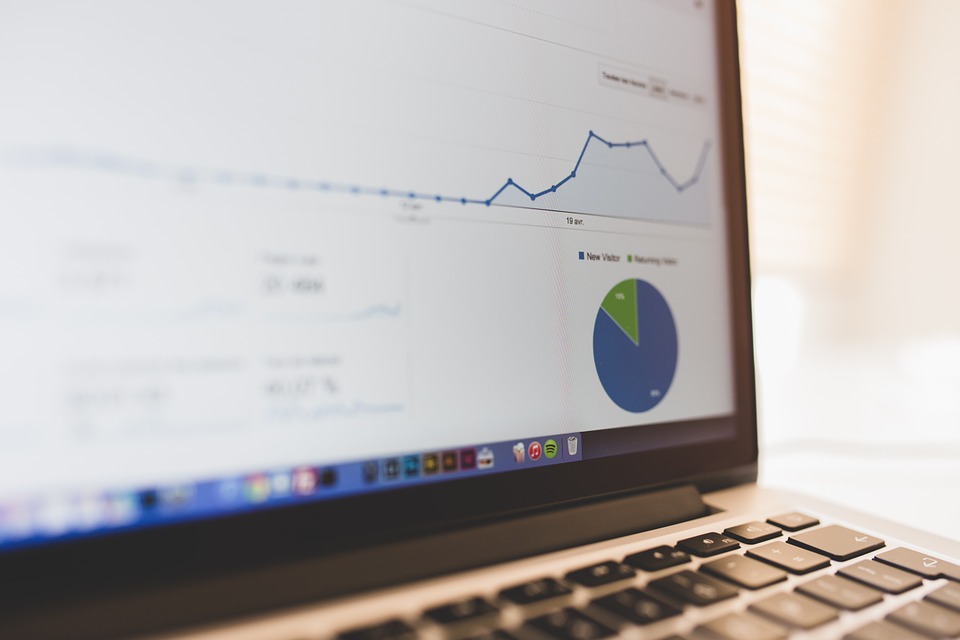Category: Energy
ContentRally is a leading source of reliable news and trending topics on Energy. Get hard-to-find insights and advice on Energy from industry-specific leaders.

Proven Vitamins Used in Energy Supplements
It is never the case where the majority of us get enough sleep (6 to 8 hours every night), eat a well-balanced or highly nutritious diet (a clean diet), and get an adequate amount of exercise (at least 20 minutes a day). There are varieties of energy supplements for both males and females.This ‘lack’ can leave us feeling sub-par, and not at our mind and body’s peak performance. The only other sure alternative it leaves us with is to complement this ‘lack’ with either nutritional or energy supplements. This is a good thing because it replenishes us in times of need.The fact of the matter is that even for those people who do get all 3 of the above (sleep, diet, and exercise) sometimes they too need energy supplements. It could be for health reasons like anemia (lack of iron in their blood) and feel lethargic most of the time, it could be a hormonal imbalance, environmental stressors or sometimes even a sickness that you didn’t know you had. So, in any of these instances, energy supplements are the way to go. There are lots of different types of energy supplements for both males and females. Which Vitamins in Supplements Boost Our Energy? Below are some popular choices: Creatine:Is a natural ingredient found in fish, pork, red meat, and poultry? When included in your diet, it can provide the body with a quick boost of energy.The main currency of energy in the body is called Adenosine Triphosphate (ATP) and when the body uses up its ATP resources, it becomes what’s known as ‘Adenosine Diphosphate (ADP).’Creatine does the job of reversing this process and provides energy to ADP which turns it back into ATP, resulting in an energy boost in your body. It’s that simple. Studies done on various athletes, for example, have shown this improvement when they took creatine as a supplement i.e. increase in several sprints in certain sports, powerful bursts of activity in things like weightlifting or jumping.Not only did it improve energy-levels and stamina, but it has also shown to improve lean muscle mass in some adults. The reason for this was because it gave these individuals energy, which in turn helped them to train twice as hard and twice as long as they normally would. Find out more here. CoenzymeQ10: This is a substance we make naturally in the cells of our bodies. The 3 main parts of our body that contain the highest levels of Q10 enzymes are the liver, kidneys and the heart. The reason we have this in our body is to give us energy and protect our cells from oxidative damage. As you can imagine, when the levels of the CoQ10 enzyme declines, so does our energy levels.Outside substitutes for CoQ10 are foods like nuts, fish, and meat in moderation.Another reason to take it is that it decreases with age, and age-related issues like heart failure, certain cancers and diabetes, and it is always best to supplement with CoQ10 in this case. Although it is good to note that this enzyme will not increase the energy levels of people who have an adequate amount in their cells already. Maritime Pine Bark: This is not a very well-known or researched extract, but in recent studies it has been shown to provide energy to the body and surprisingly enough, some studies found that it may indirectly enhance the delivery of oxygen and glucose to the brain and as a result, it supports brain energy metabolism. So, it protects not only the body but also the brain against damage. Rhodiola Rosea: a slightly more popular herb than the one mentioned above, it is found in certain cold mountainous regions and is used mostly as an adaptogen promotes homeostasis in the body and enhances its capability to handle stress.Many studies have also been done on this herb to see its effects on both physical and mental exhaustion. The results were positive, and they found this herb to be responsible for an increase in physical performance and a decrease in mental weariness. And was also found to help slightly with depression with no or very low side effects as compared to prescription drugs such as sertraline.Read Also:All That You Must Know About Prenatal Vitamins The Top 6 Vitamins And Minerals All Women Over 40 Should Take Vein Doctor Diana Wilsher Discusses Vitamins That Can Help You With Varicose Veins
READ MOREDetails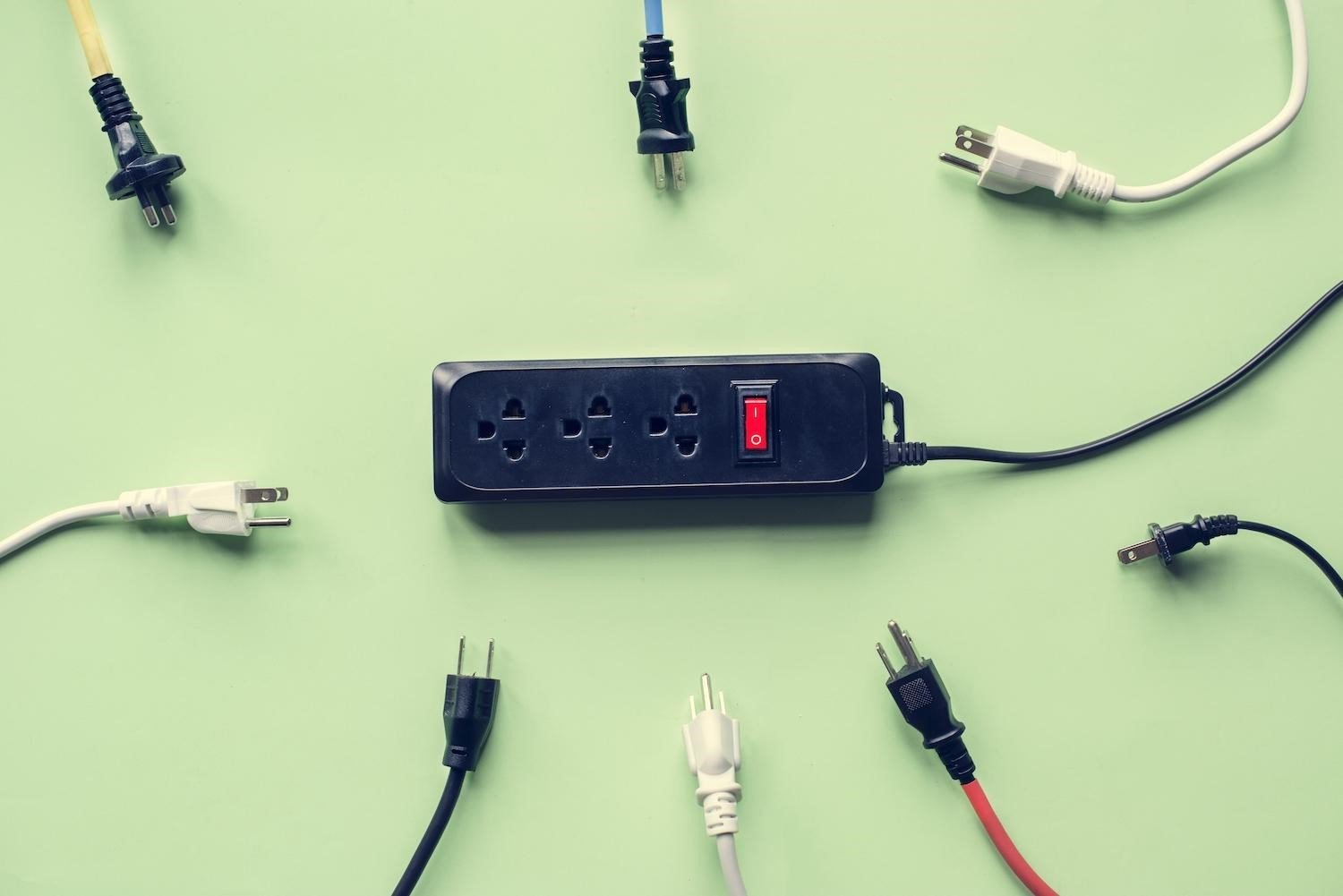
What are the Different Types of Industrial Power Solutions?
One fact of industrial production is that without power, nothing gets done. Machinery doesn't move, computers don't work and orders aren't processed and workers are idle. So it is obvious that a reliable, constant source of power is available to industry at all times. When it comes to deciding how that gets done, each company needs to start by asking what are their specific power requirements and how permanent it needs to be and what are the solutions available to meet those needs, usually by employing a specialized power company, such as APR Energy Power Solutions.While many permanent industrial facilities in America can count on public power grid infrastructure available in populated areas, more remote areas need to look at self-generating solutions to provide them with the energy they need to operate. So, assuming public power isn't available, the first question that needs to be asked is how permanent is the operation going to be. An industrial facility electric requirement can be categorized as: 1. Temporary (or interim) and emergency power Shorter-term projects can be done remotely and require a mobile solution to be in place to get the job done. Except for the emergency power situation (which would occur immediately to handle the power needs for the duration of the incident), interim power usually takes from 30 to 90 days to design and setup. This solution can be in place and used for a couple of months to many years into the future.This could include providing emergency power, temporary bridging power when a power plant is being repaired or a new one is being constructed, distributed electrical generation, etc. It can also operate at many different levels of generating support. Whether it only provides power during peak demand, as just standby power source, or being solely for the base-load prime supplier of power for the facility, suppliers of these systems can give that added flexibility to the total needs of their customers.Depending on the size of the operation, the equipment supplier can employ:Diesel, natural gas, or turbine generators and fuel tanks if required. UPS (Uninterrupted Power Supply) Systems. With UPS Batteries and Battery Cabinets Power Distribution Units Cooling units Automatic Transfer Switches Load Banks2. Long-term powerGenerally, when permanent power plant facilities are being built, a longer-term temporary generating solution needs to be employed. This usually takes many years for a plant to be built, so the long term temporary design has to do the job that the permanent plant will do.This longer-term solution requires more specific planning to meet the demands of a larger operating facility. However, more permanence means that lower-cost sources of fuel can be added into the program such as natural gas, liquid natural gas, Liquefied petroleum gas (LPG), ethanol, kerosene, and naphtha. this is usually accomplished by using a turbine generator. These not only offer fuel flexibility but can run more efficiently and with a smaller carbon footprint.Usually, these facilities are supplied by the power company vendor and the equipment ownership is retained by that company. This means that the generating system can remain for many years, but will remain a straight business expense and not a capital investment to the company, simplifying the accounting process considerably. 3. Permanent Industrial powerPermanent generating installations are required by many industries when they aren't planned to remove the equipment. Industries such as utilities, heavy industry, EPC companies, mining, oil and gas operations, and military organizations require ongoing power generation.As with the long-term solution, this more permanent industrial placement can take advantage of the latest and most efficient power equipment and control room technologies. The use of direct fuel pipelines to power the generators can be built for permanent reliability as well. But still, have the flexibility of using alternative fuels if necessary.So industrial organizations have many questions to answer before deciding how they will be supplied with ongoing power to run their business. Working with the power companies that are experts in this area is the best place to start. Careful planning and research at this point are critical for its future operational success.Read Also:5 Technologies Disrupting The Construction Industry What Surprising Industry Is Helping Canada Get Greener? 5 Industry Examples Where Protective Machine Covers Are Put To A Good Use Top Reasons Why Profitindustry Has The Best E-Commerce Platforms For Your Box Subscription Business
READ MOREDetails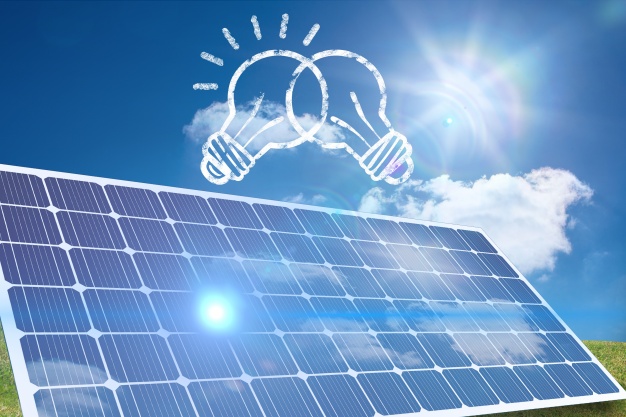
The Benefits of Solar Lighting in a Nutshell
What comes to mind when someone says “solar?” Typically we think of the sun, the Earth’s fuel provider. What if I were to tell you that we could dramatically reduce our carbon footprint by using the power of the sun to fuel something as simple as outdoor lighting? It’s true! Over 10 million tons of carbon dioxide are produced annually just from residential outdoor lighting alone--that’s no drop in a bucket! The time to reverse the impact of carbon emissions is now, and believe it or not, one of the best ways to significantly reduce our carbon footprint is by using something a little unconventional: solar lighting. Solar Lighting Benefits: More Than Just Good for the Environment A lot of “green initiative” individuals are huge proponents for solar lighting simply because it’s great for the environment. Solar panels knock loose electronics from their interaction from photons striking silicon wafers, which in turn charge a battery to power a light fixture when the sun drops below the horizon. This awesome interaction (named the photovoltaic effect) uses absolutely zero fossil fuels to power lights. There’s nothing to burn nor any power lines that need to be connected. It’s one of the cleanest energy sources available to us. We like to call solar the “new energy revolution.”Beyond that, solar lighting is a lot cheaper than many people think. The price of a solar panel in the mid-70s was about 76 dollars a watt. Can you guess how much a solar panel price is a today?In 2013, solar panel prices were about 75 cents a watt. So 1 watt of energy produced by a solar cell costs similar to the change you’ll find under your couch cushions. And now that technology is used in solar panels on top of poles to power light fixtures. It’s a fantastic solution for parking lot and street lighting that saves money and reduces the overall carbon footprint. Beyond The Green There’s a lot more in store than you might think with solar lighting. First off, every solar light works independently. There’s no power connection needed, no trenching required, and no costs with using fossil fuels. If the power goes out, so do the lights! That’s not the case with solar lighting. In fact, we’ve seen cases of solar lights holding up during strong hurricane winds to remain on after the storm in contrast to traditional lighting which would need mountains of repair from the high winds ravaging the area.Secondly, several models of solar lighting are actually portable via a forklift or just two people. They’re fantastic for construction projects where permanently-grounded lights won’t bode well. Solar lighting works great in airports for when power goes out and backup systems fail. Or, if you prefer having the portable option just in case, feel free to go that route. The emphasis is that these lights can go virtually anywhere since they don’t need to be tied to an electrical grid. Just be sure that they have access to the sun--even though the best lighting systems are rated to last over a week on a single charge, the panel won’t cull much power if it sits in the shade of a tree permanently. Talk of the Town Solar lighting tends to be a bit of a head-turner. It preserves park beautification and adds a little flair to light fixtures. A lot of media outlets tend to give attention to cities that make green efforts, especially when they’re such a public-facing installation. On top of all the benefits you’ll receive for solar lights, you might get featured in a newspaper or on television for deciding to install solar on your city’s streets. That, in turn, should generate business. Solar is great for publicity. In Conclusion Solar lighting is a lot more than just going green. It’s about recognizing that clean power is the way of the future. It’s about preserving what matters to us and ensuring your business or municipality saves as much as possible while getting the job done. If you’re in the market for a new lighting project, consider solar. The savings are there. But don’t take our word for it; do the research yourself and you’ll find it’s the best option to light up the night. Thanks for reading.Read Also:A List Of The Essential Factors You Need To Consider When Installing Solar Panels In Your Home 10 Steps To Take To Set Up Solar Panels At Home How To Start Living Off The Grid
READ MOREDetails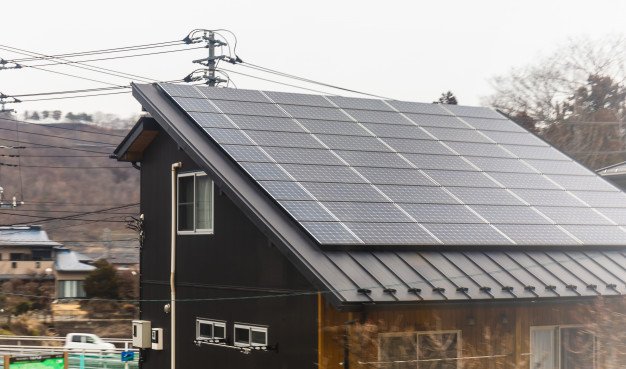
10 Steps To Take To Set Up Solar Panels At Home
Solar panel has become increasingly popular in the past few years. This is partly driven by how environmentally friendly it is, although many people have noted how economical it can be too. Despite being a smart decision for lowering energy bills, potential users can be put off by its installation costs.This shouldn't be an issue, as installing solar panels at home can be much easier than people might expect. As long as you have some DIY electrical knowledge, then you should be able to install the panels yourself.As Gem Energy Brisbane Solar Power notes, there are a number of steps that you'll need to take when installing a solar panel at home. Steps To Take To Set Up Solar Panels At Home 1. Calculate Your Electrical Load: Before you decide on anything, you should calculate your current electrical usage. Once you've done so, you'll then be able to determine which solar panels and other parts you'll need. This is relatively simple to do, and often only requires a bit of math, plus an energy reading from your meter. 2. Battery Selection: Which battery you choose can be vital for your solar power. Naturally, the panels only generate electricity during the day, so you'll need to store some for the night. To do so, you should choose a high-quality one that provides a consistent amount of electricity over time. This will make it reliable when you're running several appliances during the evening. 3. Select Your Solar Panels: There are a considerable number of solar panels to choose from, which can be overwhelming. When you're deciding on one, you should look at its energy rating. This is typically determined based on set conditions, with some being more appropriate for certain weather. As a result, you should research how well a model will perform in your area. 4. Know Where To Place It: When you're considering a solar panel, you should determine where the best place on your property to put it is. There can be a few factors at play here, with access to sunlight being the most notable. The obvious place to install the panel is your roof, although you'll need to decide where to place it here. 5. Choose A Charge Controller: This is a device that's placed between your battery and solar panel and regulates the flow of electricity between the two. Choosing the right one can make a large difference, as it dictates how effectively your battery will charge. This means that you should spend a considerable amount of time picking one. 6. Pick The Right Inverter: Solar panels typically turn sunlight into alternating current (AC). However, most appliances function on direct current (DC). As such, you'll need to purchase an inverter, which switches from one to the other. There are a few types of inverters to choose from, each with its benefits. As such, you should spend time researching each. 7. Mount The Solar Panel: Once you have the equipment, it's now time to mount the solar panel. You can either create your own mounting mechanism or purchase a premade one. If you're not overly familiar with the process, then it's recommended that you buy a kit. When creating your own, be aware of the angle that you're mounting it at, as this will affect how much sunlight it receives. 8. Inverter & Battery Stand: Similar to the solar panel itself, you may need to build a stand to hold your battery and inverter. However, this isn't a complicated task, as you'll be able to make do with a box that includes a hole for the wiring. Once everything has been wired, it's important to note that you should cover this hole as much as possible to keep everything from being damaged. You should also ensure that it's kept away from running water. 9. Start Wiring: The wiring may be the most overwhelming part of the process, although it can be more straightforward than you think. Put simply, the connection should go from the solar panel to your charge converter to your load, i.e., your appliances. Alongside this, the charge controller should be connected to your battery, which should also be connected to your load. 10. Start Enjoying Your Solar Panel: Once you've connected everything in the appropriate manner, you can start enjoying your solar power. While setting everything up, you should ensure that you've done so in the right way. The wiring is the most important area here, so you should take care of it.Read Also:What You Should Know About Solar Energy For Schools: Benefits, Expectations, And More
READ MOREDetails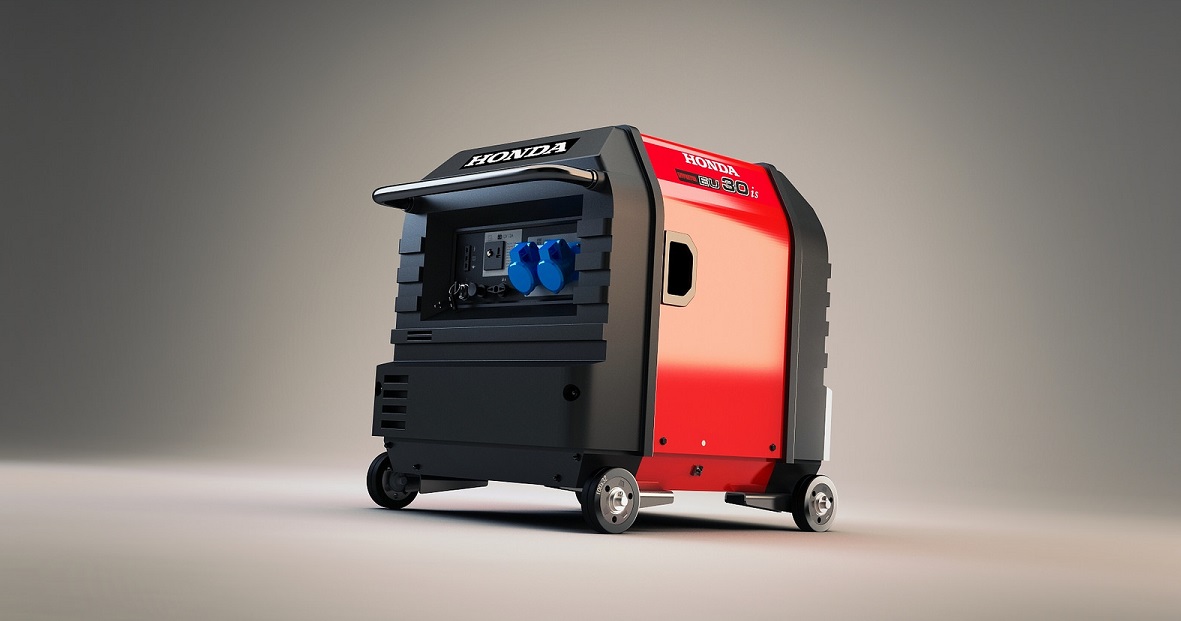
7 Specifications You Should Look for When Buying a Home Generator
Pretty much everyone has wished they had a backup home generator at one time or another. Whether you want a generator just so you won’t be left in the dark during a power failure or you need to know your family will be safe from the cold should a prolonged power outage happen during the dead of winter, buying a home generator requires some careful thought.Past the obvious choices of cost and reliability, there are a number of factors you should carefully consider before buying a home generator, such as price, your expected power needs, installation requirements, and maintenance issues.The variety of options and requirements can turn a seemingly simple purchase into a complex problem if you don’t know what you need. Here are seven specifications you should look for when buying a home generator: Specifications You Need To Look For Home Generator There are several factors you need to look at while seeking a home generator. Work out the plans that can work well for you. 1. Power Requirements: Power needs are often dictated by your budget, as the more powerful a generator is the more it will, typically, cost. However, initial determining factors for calculating the size of the generator can be addressed with this query: During an electricity failure, does the generator need to power the entire house, or just handle emergency needs?When considering a generator that is able to handle the electrical demands of all the appliances in your home, factors such as peak demand during the months you use the most electricity is a deciding factor. Common generator voltages are 120/240 volts. If you are unsure, your electrician can provide this information.If you live in the south, where the temperatures are moderate throughout the winter, you will not need as powerful a generator as if you live in the far north where temperatures can be deadly in the winter months. A powerful home generator can make things easier for you.On the other hand, when calculating needs for backup supply, only the requirements of the reserve need to be calculated.In the north, this should include the furnace and a couple of lights. In the south, a smaller unit that can power a few lights and the refrigerator is probably adequate.For emergency loads, you may need to have an electrician install a dedicated emergency circuit from the main service panel to a distinct backup panel. However, this is typically up to the homeowner’s liking for a whole-house system. 2. Fuel Type: While it might seem convenient, gasoline is usually an inferior fuel choice for emergency generators as it tends to go bad quite quickly, especially gasoline with ethanol. Better choices include propane, natural gas, and diesel fuel. Powerful home generator can make things easier and effective for you.Prices can be a major contention when choosing between a natural gas generator, or propane and diesel since the price of the generator will depend on the amount of fuel the generator uses. The accessibility of the form of fuel is an additional important element.Propane and diesel fuel generators will have to be refilled during extended outages, whereas the utility company provides a continual source of natural gas. Local laws may dictate what type of fuel is available in your area. For example, the fuel element, propane is not usually permissible to be used within the limits of the city 3. Installation: Depending on the type of unit, you may need to hire a licensed electrician to install the generator. While smaller portable units simply require you plug a power cord directly into the unit, larger whole-house generators will need to be hardwired into your electrical system. Additionally, you will probably have to hire an authorized and insured plumber if you will be connecting the generator to a natural-gas fuel source.However, for simple emergency situations, a portable unit like gasoline-powered online Honda generators can provide up to 10,000 watts of emergency power and be stored in your garage, basement or on your porch. Some of the larger generator companies have their own installation staff or may subcontract the work.However, in some areas, depending on local codes, a homeowner with the proper skills may be able to perform their own installation. The important consideration is to use a trustworthy firm with a proven record of accomplishment of installing standby power-generator systems. 4. Placement: Where your generator will be located is an important consideration. The home generator should be installed as close to the fuel supply and service panel as possible.The generator must also be positioned where it can be easily reached for servicing. This is especially important if the unit is not being powered by natural gas, as you will have to fill the tank periodically.Additionally, it must be located at a comfortable distance from the ground to prevent any form of water from coming close or entering the unit in case of flooding.Outdoor installations may be required to be a secure distance from flammable structures to meet codes, as well as for safety in the absence of any local requirements.Indoor installations should adhere to norms and rules regarding exhaust, closeness to flammable materials, fuel-supply, and ventilation.Even if local codes don’t require it, the power back up should be placed in some type of enclosure to protect it from the elements and possible vandalism.Consider if there are Outdoor Noise Regulation imposed by the local Council or government body for installing the home generator outdoors.Some municipalities require the noise level of a generator is restricted to a specified decibel level at the property line closest to the unit. If a noise ordinance exists, the required level of sound will dictate the kind of power generator that will be used. Quite a few residential generators are supplied with sound deadening enclosure. 5. Options: Accessory options can vary widely, depending on the home generator make and model. Some systems will offer a remote panel that can be installed in a convenient spot inside your home that will have controls and displays to allow you to control and monitor your system without having to go outside. Larger whole-house systems will typically have an automatic transfer switch that will switch the generator on when a power disruption is detected and may be an option on some smaller units. 6. Maintenance: Like any piece of mechanical equipment, and home generators require regular and proper maintenance to ensure it will do the job you bought it to do when the time comes. Unfortunately, because it isn’t typically used on a regular base, maintenance often isn't thought about, until the generator won’t start during a power outage.Some companies will include routine maintenance in the cost of the unit or you may be able to purchase a separate maintenance contract. If you are a do-it-yourselfer you can perform maintenance on your generator yourself, just be sure it won’t void the warranty. 7. Warranty: The typical warranty for residential generators usually varies from one to five year, based on the manufacturer and model. Be sure to study the warranty coverage, including the duration, and what is and what is not covered. Many companies will offer an extended warranty for an added fee.Read Also:Advantages Of Using A Portable Solar Generator How To Choose The Right Generator For Site Work How To Maintain Your Garden Railings? Winter Is Going! A Monthly Home Maintenance Checklist To Get You Ready For SpringFeatured Image: generatorpalace.com
READ MOREDetails
5 Features to Look for in a Business Energy Provider
Switching business energy suppliers is an opportunity that every company should not miss out on. Compared with a residential household, companies use more energy daily. An average UK small business spends around £13,000 on electricity annually, and another £7,000 on gas. With so much on the line, it is crucial to find the best and most affordable energy tariffs.Apart from the cost, you also need to consider the reliability of the service considering that any interruption will cause significant damage to business operations. That’s why it is also essential that while you are comparing quotes from different suppliers using a comparison tool like Utility Bidder, you also need to take into account the following factors. Supplier history and reputation: Corporate responsibility and values adhered to by an energy provider are some things to look into if you want to partner with a reputable supplier. Some may think that the natural choice is going with large companies that have been around for many years. Although it is true that the top energy suppliers may provide some of the best services out there, there is no reason not to look elsewhere and choose a supplier that is relatively new on the scene. These small providers usually have more personalized services, and many people are missing out on these benefits because they think that bigger is always better. Service areas: In this regard, big energy suppliers are a better choice. Depending on where you are located, you will want an energy provider that supports your location and guarantee that there will be fewer or no service interruptions. Apart from reliability, you may also want to look into tax incentives or local prices which may vary from one supplier to another depending on where you are. Prices and plans offered: The energy market is affected by many factors which makes it highly volatile. Apart from choosing a fixed-rate plan over variable plans, you also need to ensure that the supplier you want has the best offers and rates. Take note of cancellation fees or other fees associated with transferring from one supplier to another before you decide. Hidden transaction fees can add up and increase the cost of a plan which makes switching less than beneficial if that is the case. A wide range of services: In finding the best energy provider, you also need to consider if the supplier offers a variety of services. Paying multiple suppliers could be a waste of money, and if you can get all services under one roof, you will have a better chance of getting the best rates. Customer service: Suppliers with reliable service also tend to have excellent customer support. As a business owner, you need to ensure that any issues you have with your energy supply are dealt with quickly. As much as possible, choose a provider with round the clock customer service. This way, you are confident that you can get help at any time of the day. Customer support is not merely about responsiveness, but the capability to provide the best possible solution considering the unique circumstances of your company.Read Also:7 Tools Your Business Can Utilize To Simplify The Customer Onboarding New Technology In Business: 4 Inventions In 2019 That Are Changing The Game A List Of The Essential Factors You Need To Consider When Installing Solar Panels In Your Home What You Should Know About Solar Energy For Schools: Benefits, Expectations, And More
READ MOREDetails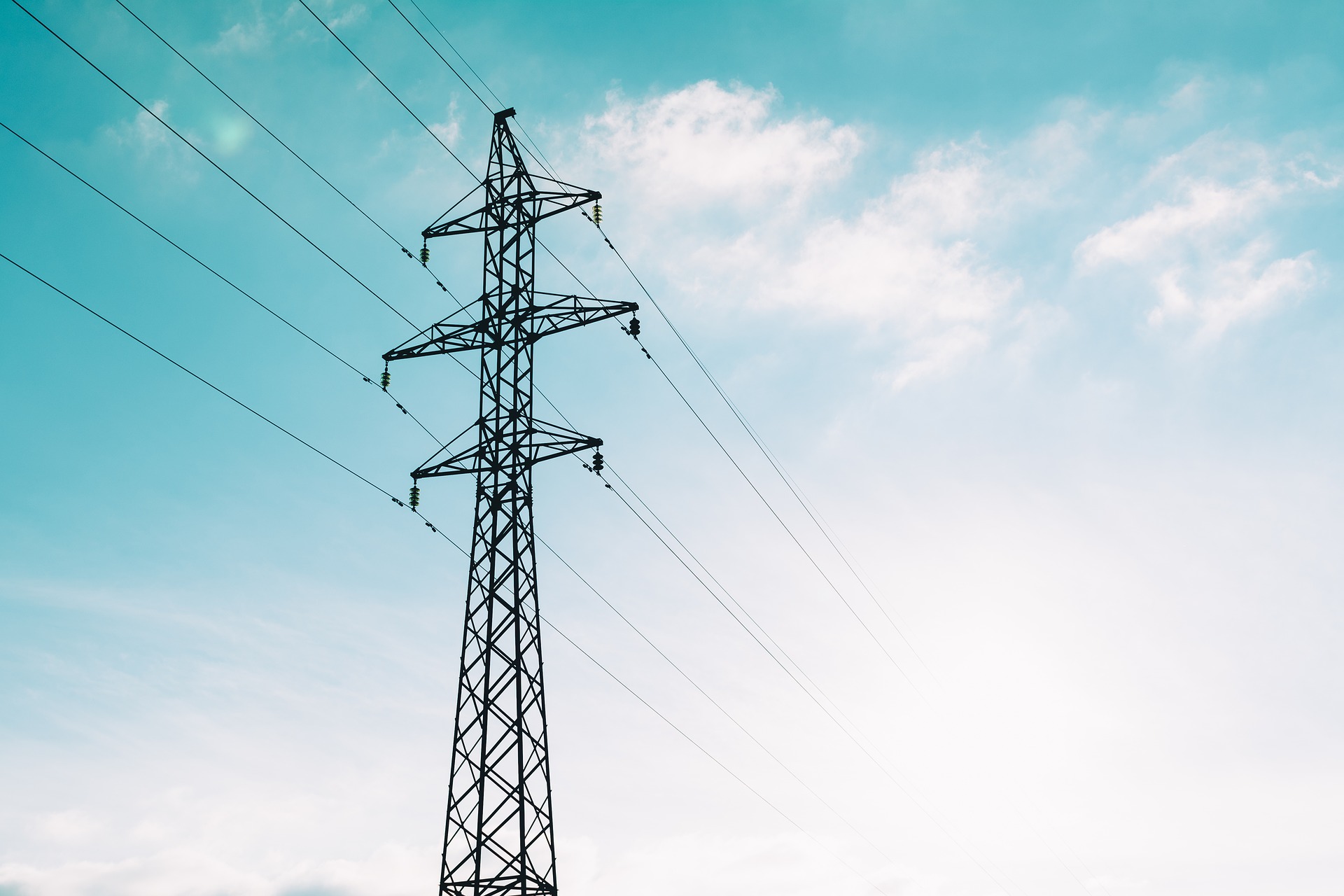
Follow These Simple Steps to Compare Electricity Rates Online
You may ask – “Why to bother comparing electricity rates?”Well, the majority of power supply companies in Australia are known for price differentiation. They have different prices for different customers. The rates also change with location.There are many reasons for such situations including:Electricity demand Cost of fuel Maintenance and operating cost of power companies Government regulations, etc.Hence, it is vital to compare the rates before you opt for one company. However, if you have not done so before, there is a high chance you are already paying high prices.Well, worry not as various websites have got you covered! Those dedicated websites can help you compare the electricity rates and plans of various companies across the continent and avail the best deal on offer. How to compare? The process to compare electricity pricing plans differs from websites. However, there are a few simple steps that are generally applicable. Note that, you can also compare gas plans as well.The steps include:Select the type of energy you are looking for: electricity, gas, or both. Enter your postcode. Select the type of property you own – house or business. If house, you may have to provide the number of residents. For example, 1 person, 2 to 3 people, 4 to 5 people, or more than 5 people. Provide some other information. Like, whether you have a smart meter, solar panels, etc. Select the electricity distributor in your area. Select the electricity provider in your area. Enter your recent electricity bill. You can skip this step though. In case you want to provide, you will have to input additional information like peak/off-peak rates, controlled load, etc.After you have entered all the information, hit the respective button to proceed.In the next page, you will get to compare electricity rates and plans of various power companies in your area. What to look for? Look for the following when you compare electricity plans: 1. Late payment fee: The charge you incur if you fail to pay the bill within the due date. 2. Payment processing fee: Some companies charge you a processing fee for each payment. They can also charge you an additional amount for payments made using a credit card. 3. Paper billing fee: You have to pay a fee for having a hard copy of your bill delivered to your home. 4. Tariff charge type: Electricity suppliers have either of the following:Single tariff – Fixed charges up to a particular limit (kWh). Charges increase after crossing this limit. Time of use tariff – Charges differ with time.Companies may have different charges for weekdays and weekends. Weekends may not have off-peak charges, unlike that of weekdays’. 5. Solar feed-in: If you have solar panels installed, you can get subsidies on your bills. Although low, solar feed-in charges can help you save some. 6. Green power: The amount of green power that you can opt for differs with companies. Generally, it ranges from 25 to 100%.So, easily compare electricity rates from these websites, and you might be able to save a considerable amount on your next bill.Read Also:How To Save More Money? Portable Generators: 5 Ways To Keep Them Clean And Running
READ MOREDetails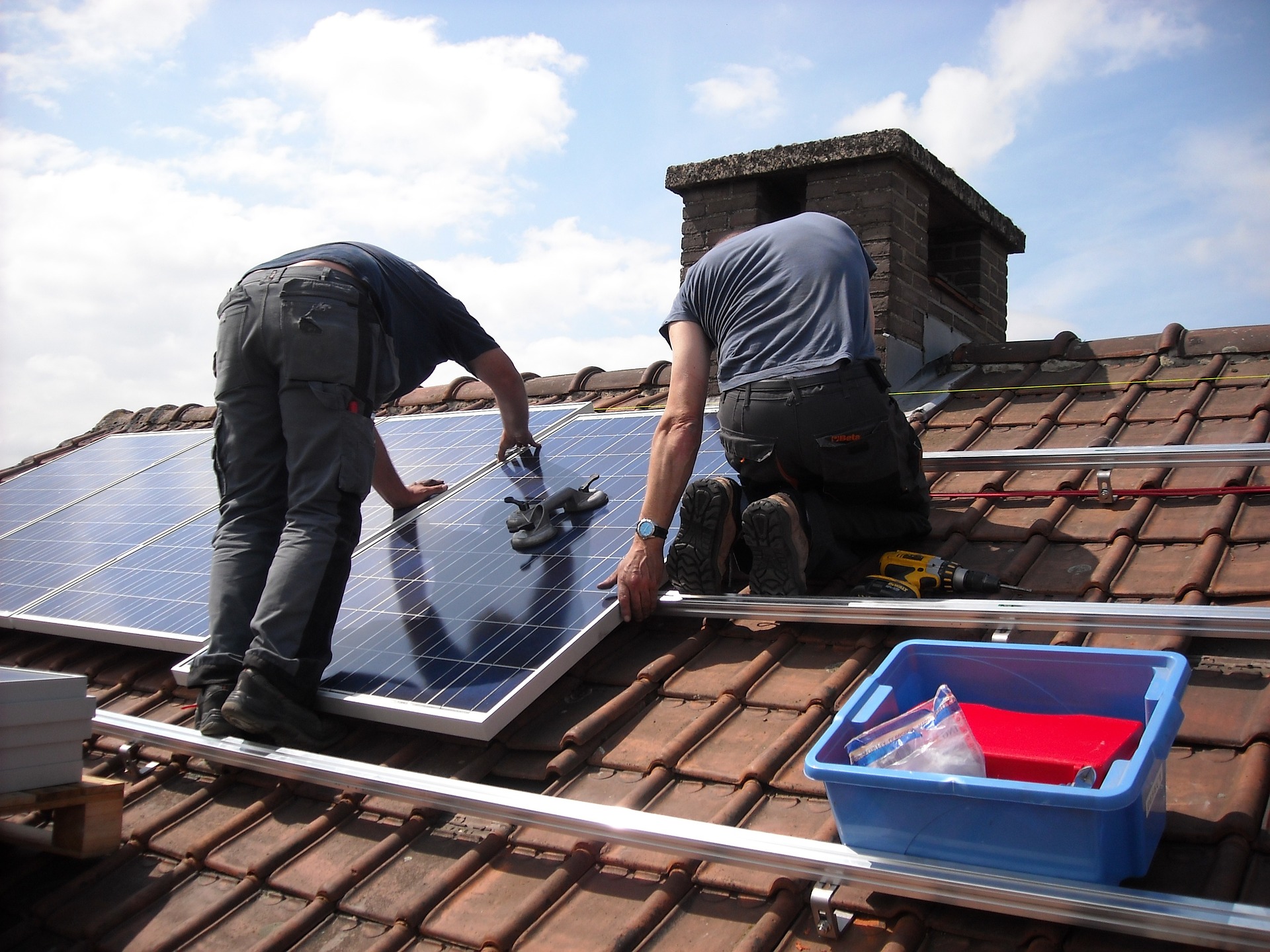
The Essential Factors You Need to Consider when Installing Solar Panels
Solar panel systems have taken the world by storm, and it’s not just in ‘sunny’ countries like Australia where solar panel installations have become immensely popular. In the UK, more homeowners and householders are opting for solar panels as well, and the fact that the cost of installing your own solar panel system has gone down tremendously in the last few years has contributed to its popularity. But if you are thinking of having a solar panel system installed, there are some major considerations you need to think about as well. For one, solar panel installations need to be done in the proper way and with the proper accreditation in order for you to take advantage of the government's Feed-in Tariff programme. What else do you need to consider, then? Here’s a list of the essential factors you need to consider when installing solar panels in your home. The investment: Truth be told, having a solar panel installation isn't a cheap affair. It is an investment, and it's best you know this from the start. But the good news is that the cost of a typical solar panel installation has already gone down by as much as 50% compared to the cost of a system eight years ago. But here's the thing: while it's not cheap, you are guaranteed to recover your investment over time, especially since your energy bills are going to be lower and you can even earn extra money through the Feed-in Tariff scheme. With the scheme, whatever extra energy you have that you don't use can be sold back to the grid, and you will receive payments from the government every quarter for this. The supply of energy: Your solar panel installation will still work quite well even if you are in the UK, with its inclement and unpredictable weather. Of course, the system will work best during the sunnier seasons, but it doesn’t mean that it won’t produce energy whilst it’s winter time or when it’s cloudy. But while it is still within reason for you to expect your system to generate energy, even on cloudy days, you can never really tell how much the system will produce. What you can expect, though, is that your energy bills will definitely be reduced – sometimes by as much as 40 to 50%. Where to place them: The placement of your solar panels is of utmost importance as well, so you also have to consider this, as confirmed by the specialists in solar in Manchester from Atlantic Renewables. Whilst your solar panels don't require direct sunlight to work, they will have to be installed by a professional, preferably one who is accredited by the MCS (this is so you can get your Feed-in Tariff). The location of the solar panels matter, and so does the angle of placement. Make sure other buildings or structures or trees don't overshadow your roof; but if this is the case, you have the option to install your solar panels on the ground as well.Read Also:Prepare Your Solar Panels For The Fall Everything You Need To Know About Portable Solar Power
READ MOREDetails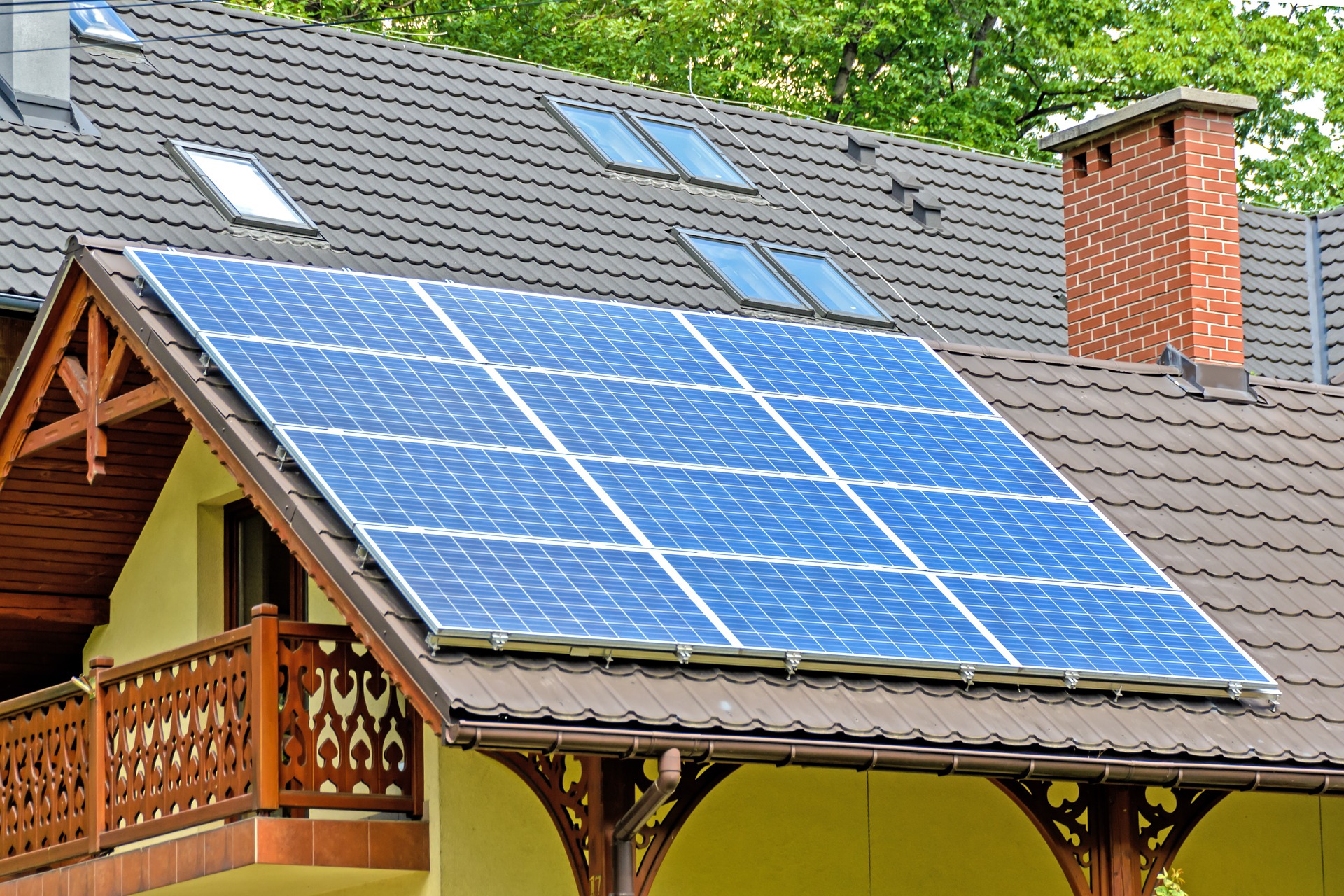
What Are Solar Incentives?
In a bid to put an end to global warming, more and more technological inventions are tilting towards promoting the sustenance of the environment; which is practically the main reason why the solar panels are invented as a means of producing electricity in the first place. To get more people on board to subscribe to this new means of producing power, measures were put in place; in which one of them is to allow the owners of the solar panels to enjoy certain privileges, which are loosely called Solar Incentives.So you ask, What Are Solar Incentives? This is a measure put in place to ensure that owners of the solar panels enjoy certain benefits, just by installing and using the product. These solar incentives have led more people to subscribe to the idea of installing and using the panels for their homes and business; because not only is it profitable to the environments, it is also profitable to their finances in the long run.The following are some of the Solar Incentives there is: 1. Solar Investment Tax Credits: Of all solar incentives available, this is the one that is commonly known. In this case, Solar owners benefit by having the privilege, as made possible by the federal government, to take out a portion of the cost of the solar panels from their taxes. What that means is that the cost of the system is being subsidized by a certain percent, from your taxes. The common investment tax credit percent is 30% of the cost of the solar panel system. Enticing isn’t it? So, if the solar panel system costs $10,000, you are only paying 70% of that amount, with the remaining 30% already footed for from your taxes.The only twist to this is that to be able to claim the investment tax credit, your taxable income should be higher or equivalent to the investment tax credit. 2. State Tax Credit: This is basically similar to the federal investment tax credit, only that this time, a small portion of the cost of the solar panel system can be deducted from your state tax bill, relieving you of some costs that would have been invested in purchasing of the solar panel system. The only twist to this is, unlike the federal tax credit, this is not applicable to all states; only residents of some states are privileged to enjoy this package.For those that could enjoy this package, they could end of saving about 50% of the cost of the solar panel, making it easier for them to purchase the solar panel system and enjoy its benefits. 3. Solar Renewable Energy Certificates (SREC): The New Jersey’s Solar Renewable Energy Certificates (SREC) program have made it possible for residents in new jersey that have acquired and installed the solar panel system to enjoy a special kind of solar incentives called certificates – though this is not exclusive to new jersey alone.You may be asking, what are Solar Renewable Energy Certificates?These are a type of solar incentive that allows owners of a solar system to sell the certificates to their utility. By standard, if you can generate 1000 kilowatts hours (kWhs) from your solar system, you are eligible to get one SREC; and an SREC is worth at least $300. Now imagine how much that figure can rise up to if you can make 6000 kilowatts hours. Let me just leave you to do the mathematics yourself.If you were once unsure about purchasing a solar panel, this should make you change your mind. 4. Net Metering: It is common knowledge that some owners of the solar panel system produce more than they can consume, in which they decide to store the overflow in an On-site battery. What if I tell you that instead of storing that in an on-site battery, you can sell to your local utility company and get returns which can be used to foot other bills. Amazing deal, isn’t it? I can bet you think it is.That’s basically what Net Metering is all about.So in days, you create more electricity beyond what you can consume with your solar panel system, instead of hoarding it in your battery, you are given another opportunity to get returns for it. Think about the future energy bills and other bills you can foot by selling excess power produced by your system. 5. Cash rebates: These are basically cash backs for the owners of the solar panel systems. It could come from different parastatals – like the government, utility company etc. – that are concerned about promoting the use of solar energy. This could also help subsidize the cost of the solar system.With the aforementioned solar incentives available, the idea of investing in the purchase and installation of a solar panel system is becoming more appealing. What are Solar Incentives? I hope this article has done justice to answering that question.Read Also:Prepare Your Solar Panels For The Fall Everything You Need To Know About Portable Solar Power What You Should Know About Solar Energy For Schools: Benefits, Expectations, And More
READ MOREDetails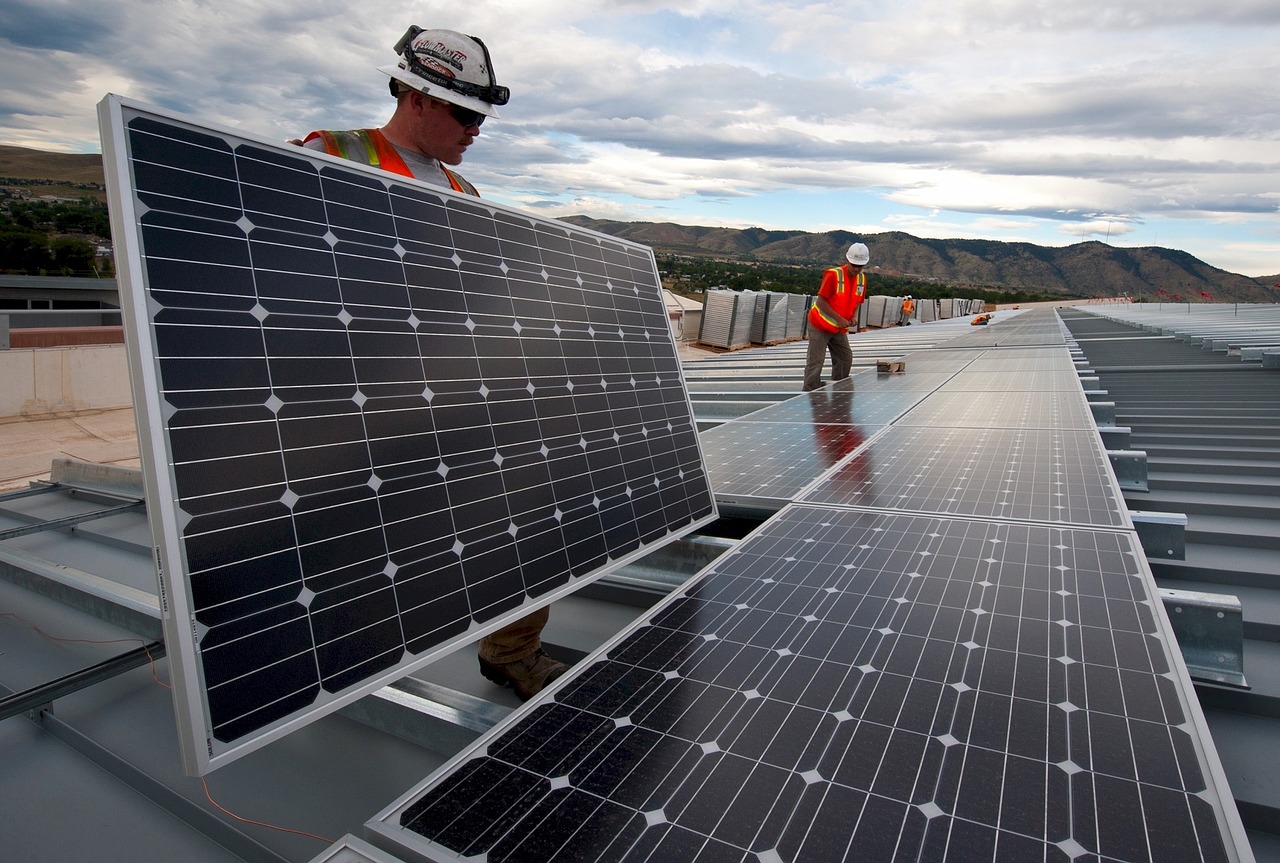
What You Should Know about Solar Energy for Schools Benefits
The use of solar energy has grown by leaps and bounds in recent times, and now, you don't just see it in residential or commercial buildings any longer – solar panel systems are now being utilised for more schools as well. The government encourages this growth and has even come up with its own form of support for schools and other educational institutions wanting to go solar. There are indeed a lot of benefits brought by having your own solar energy, but what else can you expect from it? How can you make sure that your solar investment is fully utilised? Here's everything you need to know about solar energy for schools: benefits, expectations, and more. How you can save on expenses – and earn: With solar energy, there are three ways through which you can save and earn on your expenses. One way is with your actual usage of energy from the grid. Since you produce your own energy, your energy usage from the grid will go down, thus resulting in lower electricity bills. The second way is through what you can earn based on the electricity your panels can produce. This the Feed In Tariff. The third way through which you can save and make money is when you get paid for whatever electricity isn’t used by your school. This is referred to as the Export Tariff. Will the sun be enough? This is one of the more common questions asked by many, and the answer is a simple yes. There is enough sun, even in the UK, for your solar panel system to work – and work well, at that. Although bright sunlight is always best in regard to solar energy, your solar panel system will continue to produce energy even when the days are cloudy. For every 1 kilowatt of solar panel installed, you can expect to produce an average of between 750 to 900-kilowatt hours of energy. If you are located in the south, your system will generate even more. Is it the best solution for my school? Granted, while a solar energy system is generally a good and worthwhile investment, you still have to be sure that it’s the right solution for your school, as experts in solar in Cheshire like Atlantic Renewables attest. Many of the schools in the UK are suitable, however. For instance, does your school have a roof that is flat or pitched and is the roof facing south-east, south-west, or south? If it is, that's already good news. Also, if you don't have any buildings or trees shadowing your roof, this is a good sign as well. You should also have a strong roof, although most roofs are already strong enough to hold solar panels. How to pay for it: There are different things you can do to help you pay for a solar panel system for your school, one of which is help from your local education authority. You can ask them to provide you with the capital you need at a very low or even zero rate of interest. Another way through which you can finance your solar panel system is to go to your local council. Community funding is also possible, and you may be surprised at how many communities have already worked together to bring a solar energy system to fruition for schools.Read Also:Ready Rooftops – How To Install Solar Panels Prepare Your Solar Panels For The Fall
READ MOREDetails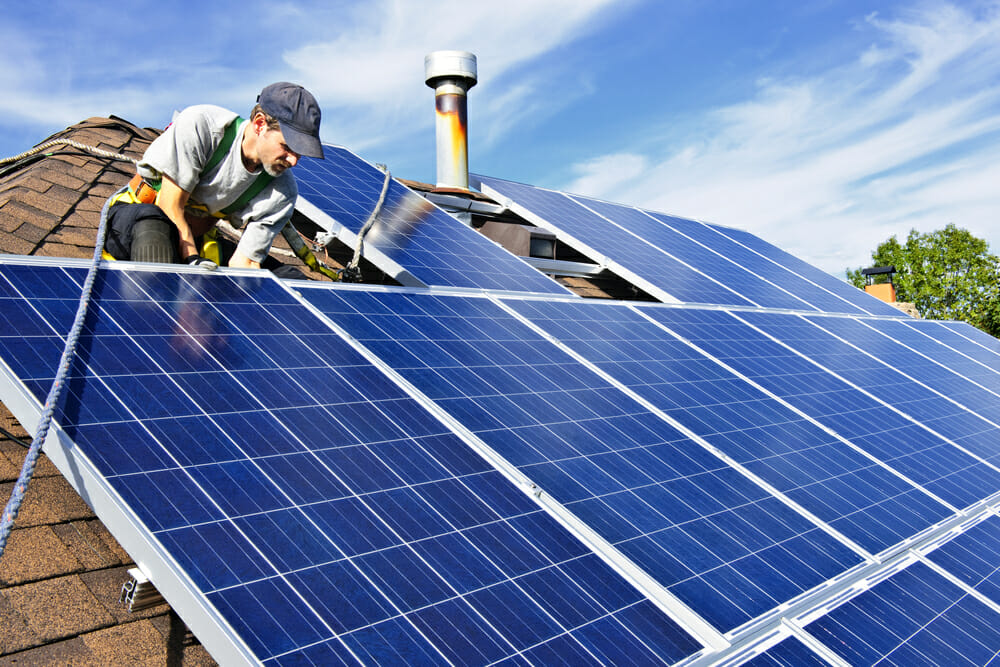
Ready Rooftops – How to Install Solar Panels
Solar power has risen in popularity rapidly all over Australia since the sudden decrease in costs at the beginning of the turn of the century and the advances in solar technology which have made commercial solar power much more accessible and affordable for all. With the continuing rise in the use of solar power, more and more home and business owners are moving to this renewable energy source and enjoying the benefits of green power.If you are deciding whether or not to make the switch to solar power, there are some things you need to consider before you go solar. Understanding the installation process is important to ensure that you install your solar panels for optimum efficiency. Most homeowners and business owners can install panels right away but there are a few things to be aware of so that your panel installation is a success and you can enjoy the benefits of solar power for many years to come.Let’s take a closer look at a few things that individuals and businesses should keep in mind before and during the installation of a new solar panel system. Determine How Much Power Will Be Produced: Before you install solar panels on your property, it’s important to take some time to do the necessary calculations in relation to the property you want to install your solar panels on to find out how much your solar system will produce. It doesn’t take long to do the calculations and once you have the results, you can determine how much power you can expect from your solar installation. Most solar installation companies can do an evaluation of your property before you install your panels to ensure it’s a suitable match for solar energy. Evaluate Your Roof: Evaluating your roof to see that it is appropriate to generate solar power is critical before you install your panels. This is usually done by the company before any contract is signed to ensure that the user will be able to make the most of the solar energy collected. However, it is not a bad idea to consider assessing your roof and position beforehand yourself too. If a roof is very shaded or the property is hidden from direct sunlight by another building or foliage, it may be necessary to reconsider your decision to go solar or come up with a different approach. For example, it’s possible to build solar installations on lawns which can equally benefit your property. Decide How Many Panels You Will Need: Prior to your installation, you should find out how many solar panels you will need, in terms of the size and scale of the solar installation and the number of photovoltaic cells. In order to find out this information, you should analyse your property and the energy capacity it currently works off. By carrying out an energy audit, you should be able to say with certainty how much power you need to use to fuel your home or business and therefore be able to decide on the measurements for your installation without any problems. Structurally Sound: If you have decided that installing a solar panel system on your roof is the right move, you will have to make sure that your roof is structurally sound and can take the weight and physical attachment of the system. Solar panel installations can last up to 30 years without any need to remove them so it is best to know that your roof will not need to be refurbished a few years down the road. Install Your Solar Panels And Enjoy A Greener Future: Once you have evaluated your home to ensure that the property is a good candidate for a solar installation, you will need to call your installation company. They will give the property one final look-over before and give you the green light before you complete the necessary paperwork. After the contract has been signed, you will be able to go ahead and prepare the orders for photovoltaic or thermal cells and the right inverter for your electric wiring.As soon as everything is set in place, you can set a date for the installation of your solar panels. Your installation company will do the rest of the work for you, install the panels and connect you to the national electricity grid so that you can take advantage of any excess energy that is produced through your system. With your solar panels installed, you can enjoy all of the benefits of solar power and look forward to a greener future.Read Also:Prepare Your Solar Panels For The Fall How To Start Living Off The GridFeature Image: modernize.com
READ MOREDetails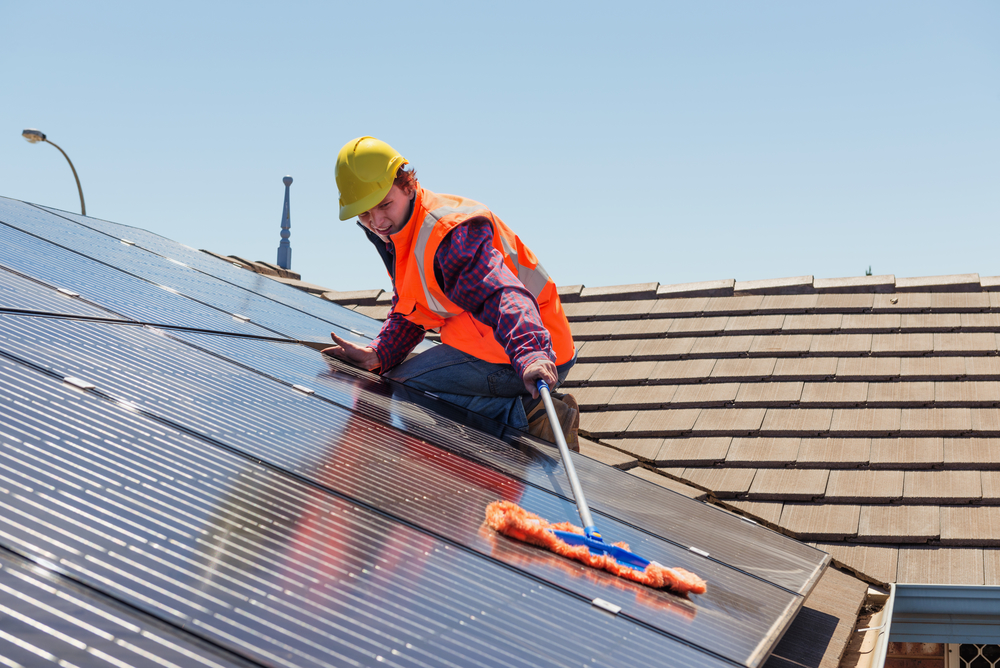
Prepare Your Solar Panels for the Fall
Summer is done, and you can already see it by the drop in temperatures and the duration of the day. With shorter days also comes the reduced amount of sunlight during a 24 hour period, which worries some solar panel owners.Some people aren’t sure how effective their solar panels will be during the colder period of the year. However, as experts from Action Solar assure us, panels work just fine throughout the year; all you need to do is make sure that you optimize them for the season. Here’s how. Clean Your Panels: No matter how many panels you have, they are exposed to the elements all the time, and naturally, they get dirty.However, solar panels are quite durable and strong, meaning that you don’t need to clean them very often and even when you do, you don’t need to go into too much detail.In fact, if you clean them too often, you might damage them, so it’s better to give them a cursory sweep every month or so and be done with it.Removing debris like leaves and branches are more important than dusting them, as most solar panels only lose about 7% of their effectiveness when dirty, as researchers from the University of California in San Diego found out. Adjust the Tilt: During the summer, the sun falls more directly to the ground, meaning that your solar panels will absorb a lot of the sunlight even without careful positioning.However, as summer transitions into the fall and eventually winter, the sun will shift and the rays will fall in a more tilted angle.So, if you want to use as much of the sunlight as possible, you will need to adjust your panels accordingly. Naturally, you should not do this on your own, but rather invite professionals to do it for you. Not only are they skilled in handling solar panels, but they will be able to calculate the optimal tilt and positioning of your panels.The best solar companies in California recommend realigning your solar panels at least twice a year in order to maximize the productivity of your panel throughout the year and not just in summer. However, if you include the fall and spring adjustment as well, you will be able to actually bring out the maximum from your panels. Deal with the Decreased Output by Saving Energy: During the summer, days are longer and usually sunnier than any other part of the year. That’s great news for your solar panels because they will be able to produce more energy.That being said, you probably spend a lot of electricity just by running your AC all day.In the fall, on the other hand, you don’t need your AC and the days are still relatively long. So, you will be able to produce a lot more energy which you won’t immediately spend. This is the time when you will be able to bring your electricity bill down by a noticeable margin.However, as fall progresses, the days will be shorter, which means that you may need to cut some unnecessary electricity spending if you want your bill to remain low; that is until winter rolls around, and you need to fire up your furnace.The technology behind solar panels is improving every day, and the time when solar panels only used to be productive in the summer are long gone.Read Also:Everything You Need To Know About Portable Solar Power How To Start Living Off The Grid
READ MOREDetails















